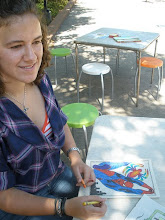Park makes a valid point in her article about children’s books written by celebrities. Often times, books with famous names on the cover receive more attention than those that are written by more experienced, possibly much better writers. Due to this trend, it is imperative that those books get more attention before they are published. Unfortunately, it seems that publishers allow celebrity authors to publish their stories without much review. Rather than letting celebrities have an easier time getting their stories on the shelves, publishers need to pay special attention to ensure that the children’s books with famous names on the front are of the best quality because that is what their readers deserve.
It is important for children to read good books because it can inspire a love of reading that will last their whole lives. I know so many people who do not like to read and perhaps if they had been exposed to well written books as kids, they could benefit now from the knowledge and vocabulary book lovers have as a result of their lifetime of reading. Reading is not only relaxing, but it also teaches valuable lessons. For example, books like Esperanza Rising and Fresh Girl, as well as the other books from our class, teach us lessons of acceptance, overcoming obstacles, and finding inner strength. These lessons will be useful in our everyday lives. Children who begin to love reading at a young age are more likely to learn the lessons from books like these. The quality of children’s books, therefore, is vitally important.
I am glad that celebrities try to use their status as well known members of society to get parents to buy books for their kids, as well as to get more money, but I find it unfortunate that lesser known authors do not sell as well. After all, writers who create their stories for a living have more time to devote to their writing and therefore are likely to publish very good books. Hopefully, parents do not simply judge books by the names on their covers.
